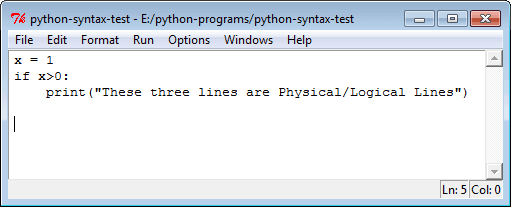What is Python?
It incorporates modules, exceptions, dynamic typing, very
high level dynamic data types, and classes.
Python combines remarkable power
with very clear syntax.
It has interfaces to many system calls and libraries,
as well as to various window systems, and is extensible in C or C++.
It is also
usable as an extension language for applications that need a programmable
interface.
Finally, Python is portable: it runs on many Unix variants, on the
Mac, and on PCs under MS-DOS, Windows, Windows NT, and OS/2.
Python Line Structure:
A Python program is divided into a number of logical lines and every logical line is terminated by the token NEWLINE. A logical line is created from one or more physical lines.
A line contains only spaces, tabs, formfeeds possibly a comment, is known as a blank line, and Python interpreter ignores it.
A line contains only spaces, tabs, formfeeds possibly a comment, is known as a blank line, and Python interpreter ignores it.
A physical line is a sequence of characters terminated by an end-of-line sequence (in windows it is called CR LF or return followed by a linefeed and in Unix, it is called LF or linefeed). See the following example.




No comments:
Post a Comment